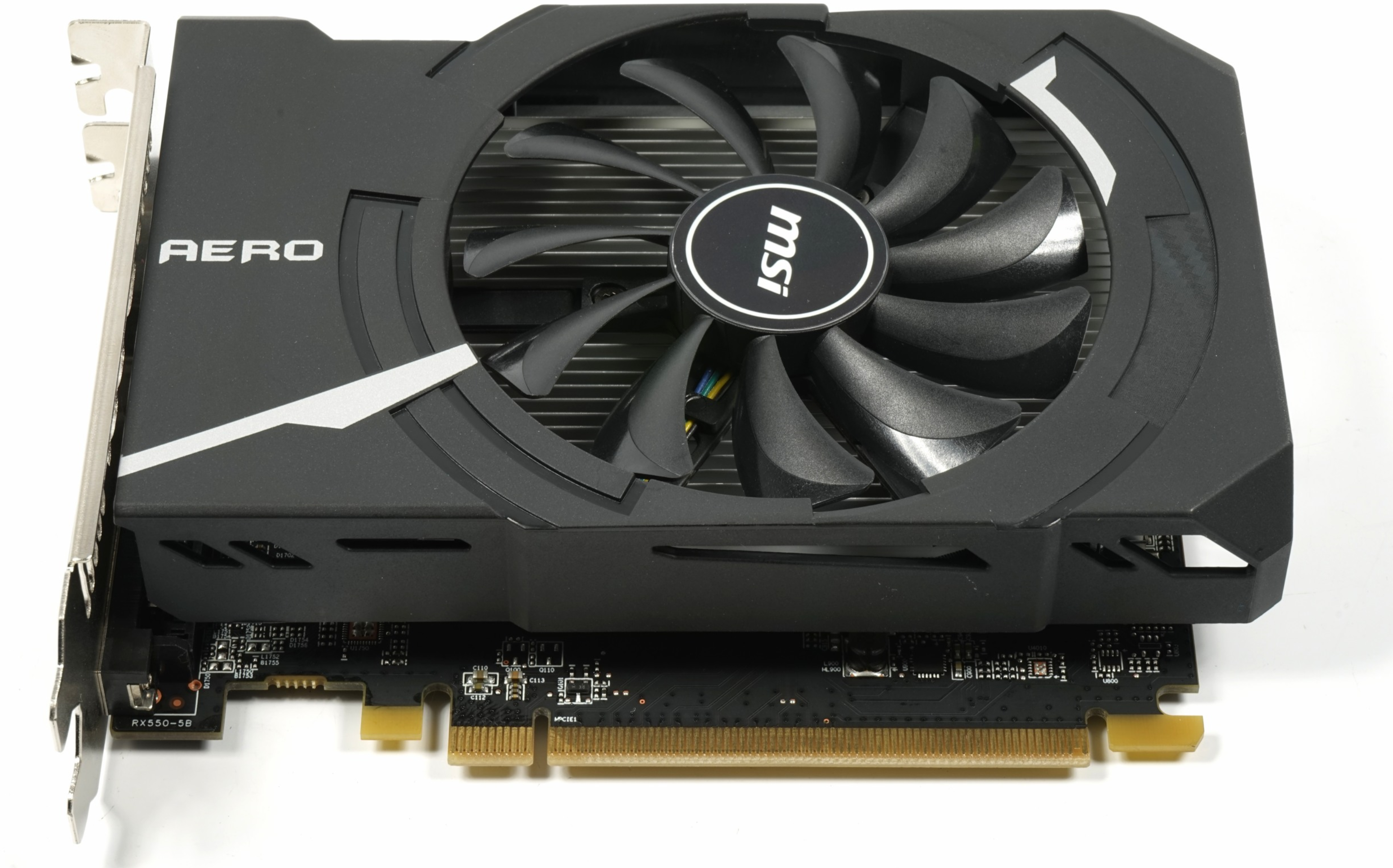Chinese Loongson GPU Promises RX 550-Level Performance, Likely Arriving in 2025

Loongson Technology, one of China's fabless chipmakers, has provided an update on the upcoming 9A1000 graphics card at the company's third-quarter earnings call. The 9A1000, which reportedly offers performance comparable to a Radeon RX 550, will go into tape out in Q3 2024.
The U.S. blockade of China's access to advanced semiconductors and tools has hampered the country's technological development. But it's a mixed blessing as it has also motivated China to work toward technological self-sufficiency. China hasn't made gigantic strides in the graphics card space yet, but it's getting there. Over the last few years, we've seen some intriguing graphics products from outfits such as Biren, Innosilicon, Jingjia Micro, and Moore Threads. Loongson will also add its grain of sand to China's domestic graphics card ambition.
Now, much is known about the 9A1000. Hu Weiwu, Loongson's founder, asserted that the 9A1000 delivers comparable performance to the Radeon RX 550, an entry-level AMD graphics card from six years ago. The Radeon RX 550 provides around 1.2 TFLOPS of FP32 performance, so that's the projection for the 9A1000. Weiwu emphasized that the 9A1000 will also support scientific computing and AI acceleration. The statement somewhat hints at an implementation similar to Nvidia's Tensor cores. Without access to major foundries like TSMC, Samsung, or Intel Foundry Services, Loongson will likely have to turn to SMIC to produce the 9A1000.
A product that offers performance from a six-year-old AMD graphics card doesn't sound like a big deal for most. But for China, it represents a step in the right direction. China isn't expecting GeForce RTX 4090-level performance. It just needs a working product that performs decently. In the case of the 9A1000, it could either turn out great with entry-level gaming performance or end up being a simple solution for display output that Loongson can pair with its upcoming 3A6000 processors, rumored to sport an IPC that rivals AMD's Zen 3.
As ambitious as China is, you can't just cheat the process. It'll take years before a Chinese domestic graphics card can reach the GeForce RTX 4090 levels, especially now that U.S. sanctions are becoming more stringent as time passes. Chinese chipmakers, like Moore Threads, have proven that they can develop competing graphics cards if given enough time. Even then, the hardware is one thing, but the software that makes it work is another story.
The MTT S80 PCIe 5.0 graphics card from Moore Threads initially trailed behind the GT 1030 in gaming performance. But a new driver released months later helped reduce the divide between the MTT S80 and the GeForce GTX 1650.
The U.S. export restrictions to China have been and will continue to be a headache for China's push for domestic hardware. Biren and Moore Threads, two of the most prominent players, are already on the U.S. Entity list, forcing both developers to downsize. Moore Thread recently had to let go of some of its staff, although the company didn't reveal how many employees were laid off. Making graphics cards isn't getting any easier, so we'll have to see if Loongson can bring the 9A1000 to the Chinese market.
Get Tom's Hardware's best news and in-depth reviews, straight to your inbox.

Zhiye Liu is a news editor, memory reviewer, and SSD tester at Tom’s Hardware. Although he loves everything that’s hardware, he has a soft spot for CPUs, GPUs, and RAM.
-
TCA_ChinChin Again a pretty embarrassing showing from Chinese GPU companies. Their domestic CPU and NAND tech is so much more comparably to US showings than their GPUs.Reply -
ivan_vy Reply
no need to win this race, just need to have a horse (or half a dozen) on it. This means domestic GPUs keep feeding the market, game companies can produce for a XB-one target performance and more important, office users (no need great graphic capabilities) can be supplied by homegrown technology.TCA_ChinChin said:Again a pretty embarrassing showing from Chinese GPU companies. Their domestic CPU and NAND tech is so much more comparably to US showings than their GPUs.
Once the local market is secured, halo products can grow with enough time.
While gamer or graphic enthusiast might laughs, the giants like Intel, AMD and Nvidia are really worried of the huge market that they see dissolve in the coming years. -
bit_user Reply
I think it depends on a few things. First of all, it was AMD's entry level GPU on 14 nm. So, if they're making it on a comparable process, it would be a reasonable place to start. Furthermore, if they can actually deliver on that promise, it would be a lot better than wildly over-promising, like MooreThreads did. Especially, if they're doing all the software + hardware from scratch.TCA_ChinChin said:Again a pretty embarrassing showing from Chinese GPU companies.
The other consideration is if their eventual goal is to make it an iGPU chiplet, then it's also a very respectable performance level for something like that.
BTW, has anyone heard news of Vivante (i.e. Verisilicon)? I've seen some Linux driver activity, but not sure I've heard any news on the hardware front. -
williamcll Reply
You do realize the US don't actually manufacture their consumer GPUs right? It's all a mix of chips from mostly Japan, Korea and taiwan.TCA_ChinChin said:Again a pretty embarrassing showing from Chinese GPU companies. Their domestic CPU and NAND tech is so much more comparably to US showings than their GPUs. -
bit_user Reply
Yeah, coverage of semiconductor manufacturing tends to be pretty heavy, on this site. You can't follow their news feed, for very long, without picking up a lot of that stuff.williamcll said:You do realize the US don't actually manufacture their consumer GPUs right? It's all a mix of chips from mostly Japan, Korea and taiwan.
BTW, Micron makes GDDR memory and has some plants in the US. I don't know exactly where they make the GDDR memory, but it's plausible it could be fabbed in the US.
Also, AMD's Polaris generation (i.e. the one referenced in this very article) used Global Foundries 14LPP and they have fabs in the US. Again, I don't know exactly where the Polaris dies were made, but it's plausible they were fabbed in the USA. -
TCA_ChinChin Reply
Thats true but im mostly focusing in on chip design, not fabrication. Thats a whole other box of worms especially if the topic is Chinese chip manufacturing.williamcll said:You do realize the US don't actually manufacture their consumer GPUs right? It's all a mix of chips from mostly Japan, Korea and taiwan. -
TCA_ChinChin Reply
I dont think Intel, Nvidia, or AMD are gonna be worried in the foreseeable future. Maybe in a decade, if progress from the Chinese end doesn't hit too many speed bumps.ivan_vy said:no need to win this race, just need to have a horse (or half a dozen) on it. This means domestic GPUs keep feeding the market, game companies can produce for a XB-one target performance and more important, office users (no need great graphic capabilities) can be supplied by homegrown technology.
Once the local market is secured, halo products can grow with enough time.
While gamer or graphic enthusiast might laughs, the giants like Intel, AMD and Nvidia are really worried of the huge market that they see dissolve in the coming years. -
bit_user Reply
The one thing I thought could really accelerate it is Imagination and their mature, PowerVR IP. However, given the misfortunes of MooreThreads' S80, which supposedly licensed Imagination's IP, it seems not to confer such a huge head start, after all. Or, maybe they just made some basic mistake in the implementation and the next gen will be massively better, but you don't see that level of bungling in mobile SoCs which implement such IP.TCA_ChinChin said:I dont think Intel, Nvidia, or AMD are gonna be worried in the foreseeable future. Maybe in a decade, if progress from the Chinese end doesn't hit too many speed bumps.
I still wonder about Vivante/Verisilicon, since they should have quite a head start on both the hardware & software front. I think we can all now appreciate just what kind of effort is involved in the software, after witnessing how long it's taken for Intel's Alchemist drivers to mature. -
TCA_ChinChin Reply
I'm also curious on how those IPs are going to turn out. I'm not saying that these new GPU designs can't or catch up to Nvidia, AMD, or Intel graphics, its just that these early examples are pretty poor, and point toward a long and difficult road ahead.bit_user said:The one thing I thought could really accelerate it is Imagination and their mature, PowerVR IP. However, given the misfortunes of MooreThreads' S80, which supposedly licensed Imagination's IP, it seems not to confer such a huge head start, after all. Or, maybe they just made some basic mistake in the implementation and the next gen will be massively better, but you don't see that level of bungling in mobile SoCs which implement such IP.
I still wonder about Vivante/Verisilicon, since they should have quite a head start on both the hardware & software front. I think we can all now appreciate just what kind of effort is involved in the software, after witnessing how long it's taken for Intel's Alchemist drivers to mature.
It's well known how difficult it is to create new or even iterate on existing GPU designs, and that applies doubly for many of these Chinese GPU businesses due to embargoes and restrictions. -
bit_user Reply
In their favor, both AMD and Nvidia have had rather substantial engineering offices in mainland China for about 15 years. Not sure exactly what they do/did there, but you'd expect there to be some level of expertise they're drawing from.TCA_ChinChin said:It's well known how difficult it is to create new or even iterate on existing GPU designs, and that applies doubly for many of these Chinese GPU businesses due to embargoes and restrictions.
Furthermore, there's more complete and higher-quality open source implementations of the graphics software stack than ever before. AMD, Intel, and now even Nvidia have open source Linux drivers, plus there's the Mesa userspace graphics stack they can crib code from. Now, this being GPL code, they should open source anything they copy from it, but if some of that code ends up in their Windows drivers, I don't expect they would.